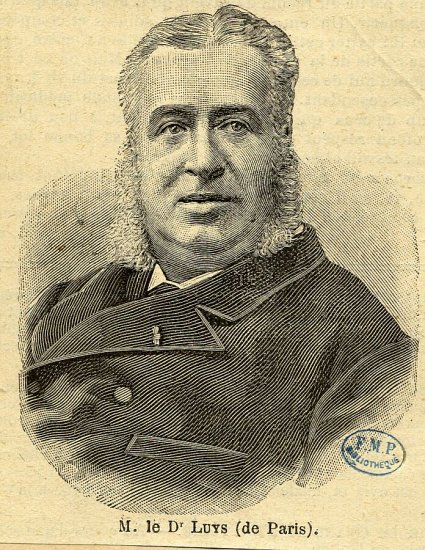<Back to Index>
- Neurologist Jules Bernard Luys, 1828
- Composer Petrus Leonardus Leopoldus "Peter" Benoit, 1834
- Emperor of Austria Charles I, 1887
PAGE SPONSOR

Jules Bernard Luys (1828 – 1897) was a French neurologist who made important contributions to the fields of neuroanatomy and neuropsychiatry.
Born in Paris on 17 August 1828 he became a doctor of medicine in 1857 and conducted extensive research on the anatomy, pathology and functions of the central nervous system. In 1865 he published a treatise entitled Studies on the Structure, Functions and Diseases of the Cerebro - spinal System, this book was accompanied by a hand drawn three - dimensional atlas of the brain. It was within this book that Luys provided the first description of the structure that is today called the subthalamic nucleus. Luys termed this nucleus the bandelette accessoire des olives supérieures (accessory band of the superior olives) and concluded that it was a centre for the dispersion of cerebellar influence upon the striatum. Luys also traced the projection from the subthalamic nucleus to the globus pallidus and the projection to the subthalamic nucleus from the cerebral cortex. Today these pathways and structures are thought to be central to the pathophysiology of Parkinson's disease, the subthalamic nucleus being one of the major targets for deep brain stimulation.
In recognition of Luys discovery Auguste Forel (1848 – 1931) gave the subthalamic nucleus the name corpus Luysii (Luys' body), a name still sometimes used today.